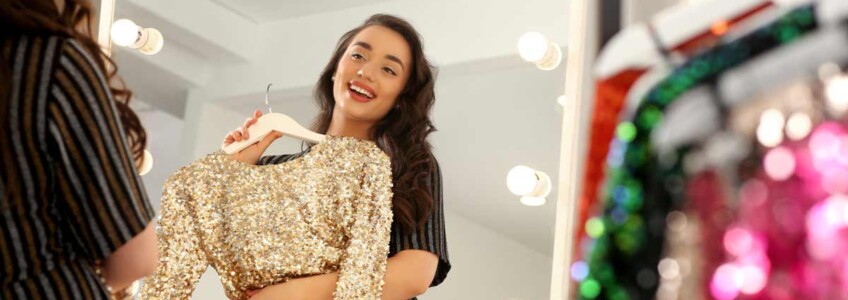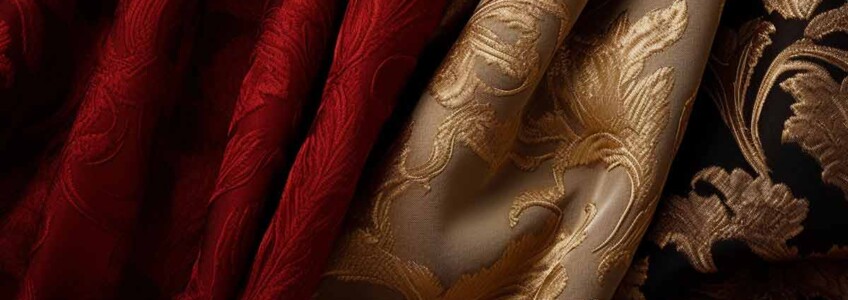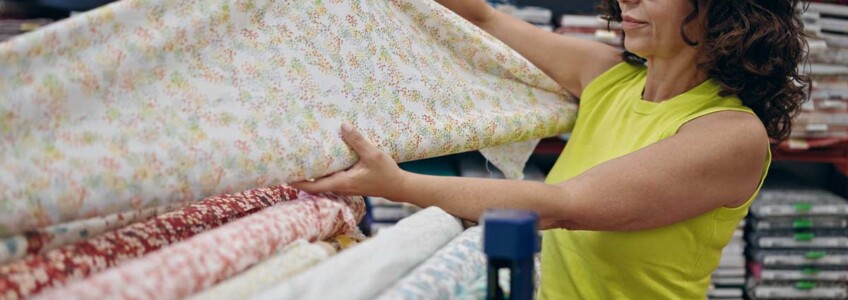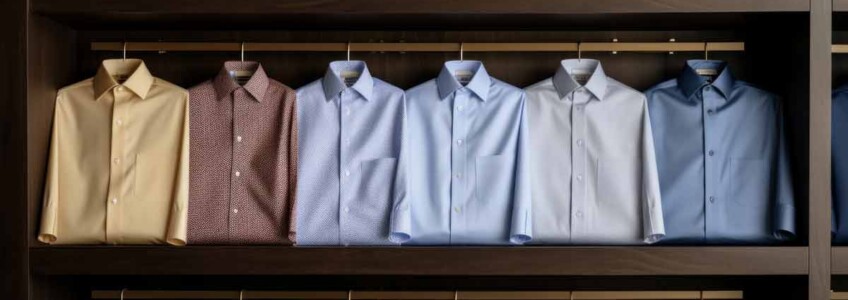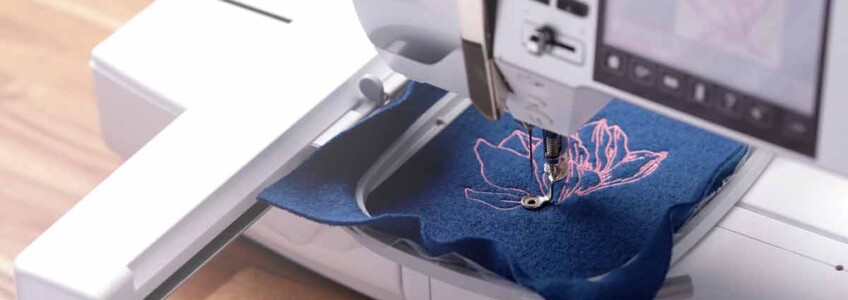In the glittering world of fashion, sequined dresses represent a bold but incredibly elegant choice for those who want to stand out. Whether it’s a gala evening event, a party with friends or a special occasion, knowing how to wear sequins and create matching sequin dresses can make the difference between a memorable look and one that goes unnoticed.
(more…)Outdoor curtains: how to choose the best fabrics
Outdoor tents are an effective solution to protect open spaces from sun and weather, while improving the aesthetics of outdoor environments. The choice of outdoor curtain fabrics is crucial to ensure durability, functionality and elegance. Here are the main features of the exterior curtains materials and the tips to follow for selection and we will highlight the best fabrics for outdoor awnings.
(more…)Complete interface guide: discover types and uses
In the world of textiles, the importance of interfoders is often underestimated, despite being a fundamental element in the realization of clothing, accessories and household items. This interfoder guide has been designed to help you navigate between the different types of interfoder and their uses, providing you with the necessary knowledge on how to choose the right interface for each project on the vast catalog always updated Manifattura Foderami Cimmino.
(more…)The best fabrics for elegant wedding favors for every event
The choice of the best wedding favors fabrics is not only a matter of aesthetics, but a real business card for the most significant events, such as weddings, christenings or anniversaries. A detail that can make the difference in the guest experience, making every moment unique and unforgettable. In this article, we will explore the most suitable fabrics to create wedding favors that leave their mark.
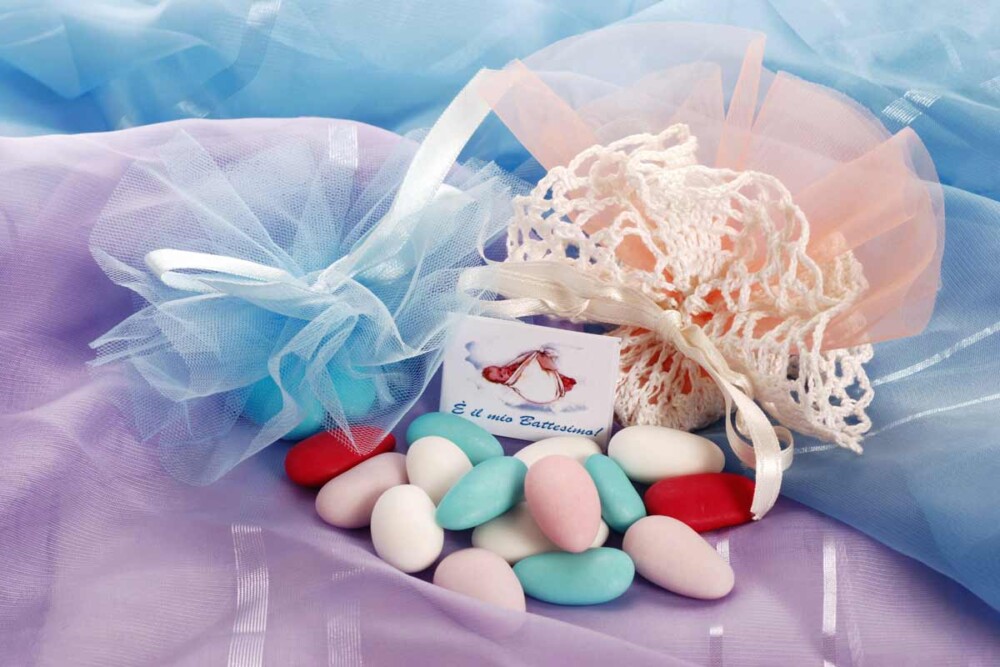
Why the choice of fabric is crucial for wedding favors
The bonbonniere is a key element of every event, a symbol of gratitude and remembrance. The choice of fabric, in this context, plays a crucial role: a quality fabric elevates the design and the perception of the gift, communicating care and attention to the guests. The quality fabrics for wedding favors not only embellish the object, but increase its affective value and durability.
The fabric chosen for the favors is a direct expression of the style and personality of the event organizers. Whether it is a wedding, a baptism or an anniversary, the fabric can tell a lot about the taste and values of the hosts, from their predilection for luxury and elegance, highlighted by the choice of silk, to their commitment to sustainability, emphasized by the use of organic cotton or eco-friendly fabrics.
The bonbonniere is a symbol of gratitude to the guests, a way to say “thank you” for having shared such an important moment. A high quality or carefully chosen fabric reflects the importance that is attributed to this gesture of thanks, communicating appreciation and respect for the guests.
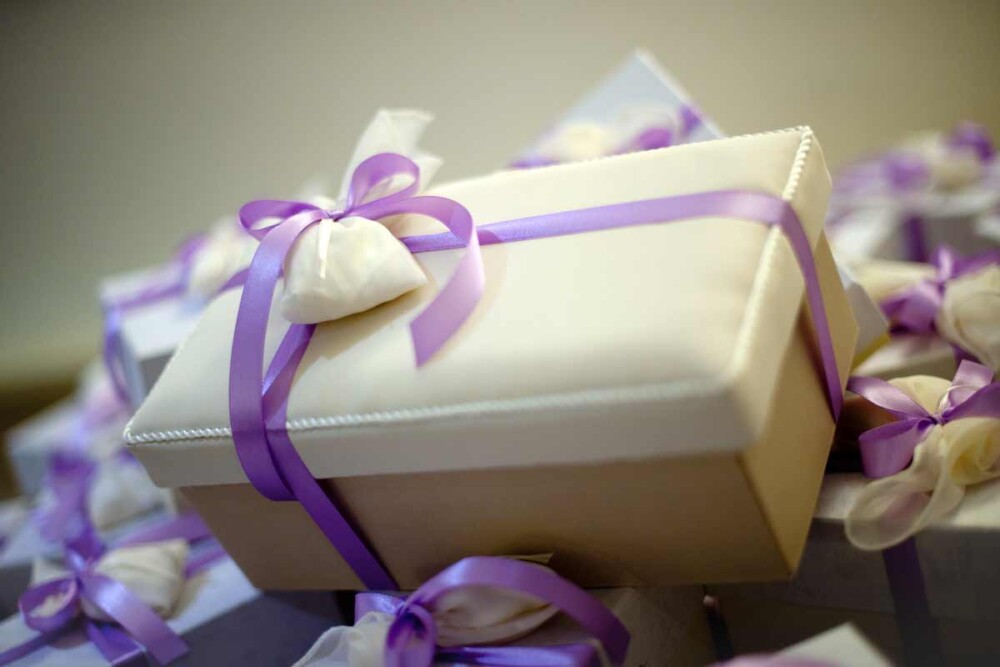
The most popular fabrics for wedding favors
What fabrics to use for elegant wedding favors? Let’s discover those selected by Manifattura Foderami Cimmino.
Silk
Silk, with its sheen and softness, is the luxury fabric par excellence. Ideal for wedding favors, adds a touch of elegance and unparalleled refinement. The silk for wedding favors is perfect for those who want to impress with class.
Linen
Linen is appreciated for its resistance and its ability to give a natural and refined look. Choosing linen for wedding favors means opting for a traditional material, such as Lino Tela 2001 Dolce, able to adapt to any style, from the most classic to the most modern.
Tulle
The tulle for wedding favors is an excellent choice for those looking for a material that combines elegance, versatility and convenience. Whether it is to gently wrap the confetti or to create aerial decorations, the Tulle Bonbonniere is able to transform each bonbonniere into a small masterpiece of style and delicacy, leaving an unforgettable memory of the event.
Cotton
The cotton is the ideal choice for those looking for sustainable fabrics for eco-friendly favors. Soft, resistant and easy to work, the Vichy Cotton Fabric is perfect for favors that respect the environment without sacrificing beauty.
Innovative and Eco-friendly fabrics
More and more space is given to innovative fabrics, which combine aesthetics and sustainability. Recycled materials, bamboo fibers or fabrics produced with low environmental impact techniques, such as Laminated Jute Canvas, represent the advanced frontier for eco-friendly wedding favors.
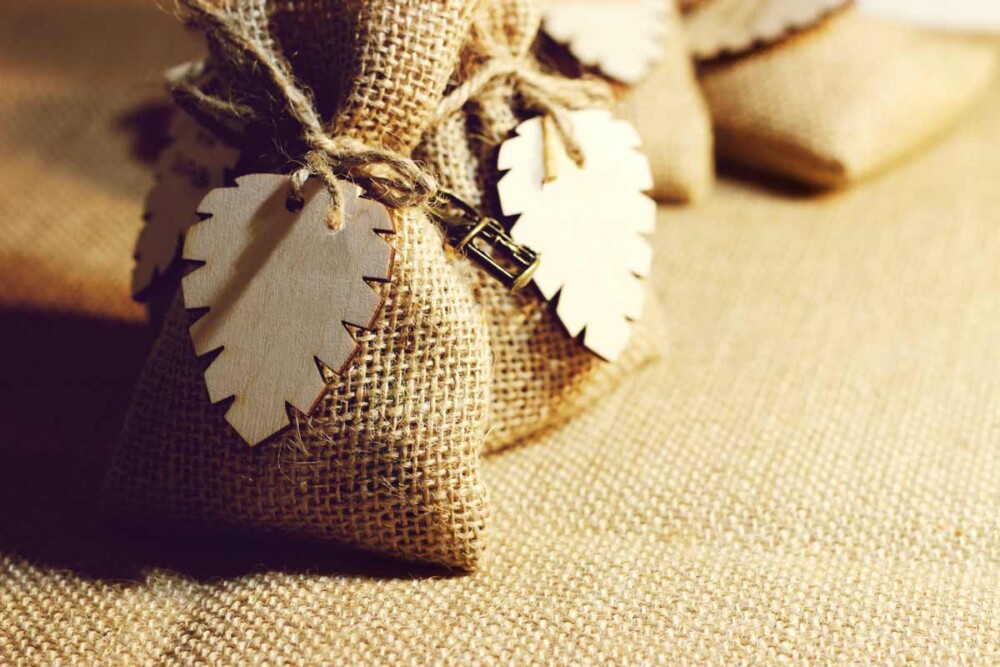
How to choose the right fabric for wedding favors
The choice of fabric should reflect the style and theme of the event. For a classic wedding, silk or linen may be the winning choice, while for an outdoor or eco-friendly event, organic cotton or innovative fabrics may be more appropriate. Considering seasonality is equally important: light fabrics for the summer, warmer materials for the winter.
The quality and type of fabric chosen directly affect the perception of the gift by the guests. A fine fabric, such as silk or linen, can elevate the wedding favor, turning it into an object of luxury and desire. On the contrary, an economic or chosen fabric without care can diminish the perceived value of the gift, even if the intention was genuine.
The durability of the fabric is another aspect to consider. A quality fabric not only resists better to the passage of time, but also ensures that the memory of the event can be preserved and appreciated for years. Fabrics such as linen and organic cotton, known for their resistance, are excellent choices for those who want their wedding favors to remain a lasting memory.
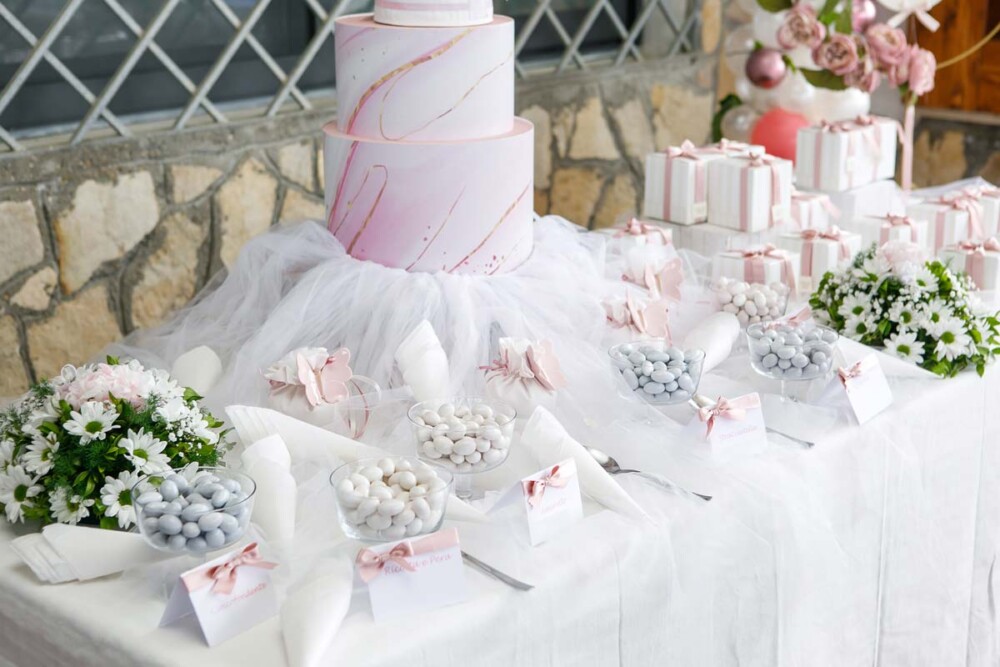
Customization and wedding favors trends
Customization is a growing trend: the personalized embroidery favors allows you to make each gift unique and personal. Current trends see a predilection for minimalism, with a focus on sustainable materials and designs that reflect authenticity and attention to detail.
The choice of organic fabrics for wedding favors, as well as luxury fabrics for wedding favors, therefore, plays a fundamental role in the art of creating tangible and significant memories. Fabrics are not only the material from which the favors are made, but the means through which emotions and values are transmitted.
Choosing with care the fabrics for wedding favors means giving a piece of history, a memory that will remain impressed in the hearts of guests.
Tessuto Broccato: che cos’è e per cosa si usa
Il tessuto broccato, con la sua ricchezza e il suo fascino, è una vera e propria espressione di lusso e raffinatezza. Originariamente tessuto in seta, il broccato è noto per i suoi intricati disegni rilievo, spesso realizzati con fili d’oro o d’argento. Questo tessuto non è solo un simbolo di eleganza, ma anche un testimone vivente della storia del tessuto attraverso i secoli. Manifattura Foderami Cimmino ci guida alla scoperta dei segreti dei tessuti broccato online!
(more…)Tessuto Duchesse: che cos’è e per cosa si usa
Il Tessuto Duchesse, noto anche come Duchesse satin, è una stoffa che incarna lusso e raffinatezza. Questo tessuto, spesso associato alla moda di lusso e agli abiti da sposa, è apprezzato per la sua qualità e versatilità. Ma cosa rende il Tessuto Duchesse così speciale? Esploriamo la sua storia, le caratteristiche, e come sceglierlo e curarlo al meglio con i consigli di Manifattura Foderami Cimmino.
(more…)Florence Home Texstyle | 10 – 12 February 2024
Florence Home Texstyle is confirmed as the only international fair in Italy dedicated to textiles for boating, spa, contract and hotellerie: it is an unmissable event for professionals and entrepreneurs in the sector.
(more…)Carnival 2024: New Fabrics for Trendy Costumes
Shirts fabrics: how to choose the suitable one for any occasion
The choice of fabric for a shirt, be it men’s or women’s shirts, is a crucial aspect that defines style, comfort and adaptability of the garment to different occasions. In the world of fashion, shirt fabrics represent a fundamental element, both in the male and female wardrobe. With the advent of e-commerce, the purchase of fabrics for shirts online has become increasingly popular, offering a wide range of options and the convenience of choosing from home the best fabrics for shirts.
Let’s find out how to choose the fabrics for shirts by following the tips and discovering the products of Manifattura Foderami Cimmino!
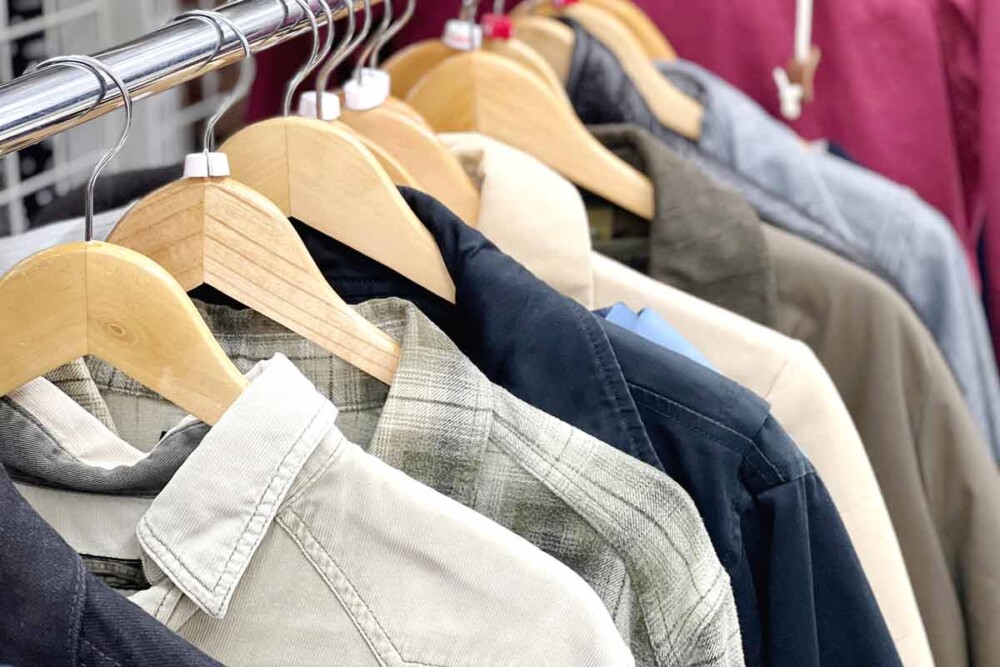
Shirt fabrics: a guide to choice
When it comes to shirts fabrics, the variety is wide. Each material has unique characteristics that affect the look and feel of the shirt. Here are some of the best fabrics for shirts and their peculiarities:
Cotton, the king of shirt fabrics
Cotton is perhaps the most popular among the fabrics for men’s and women’s shirts. It is appreciated for its softness, its ability to absorb moisture and its ease of washing. Cotton offers a wide range of finishes, from smooth, lightweight poplin to sturdy Oxford and delicate Egyptian cotton.
Camiceria Popeline Banbury Stripes cm 150
The Shirt Popeline Banbury Stripes, 150 cm wide, is an ideal shirt fabric for both men and women shirts. This item is made using the highest quality yarns, with a title of 50, which give the fabric an exceptional softness, making it pleasant to the touch and comfortable to wear.
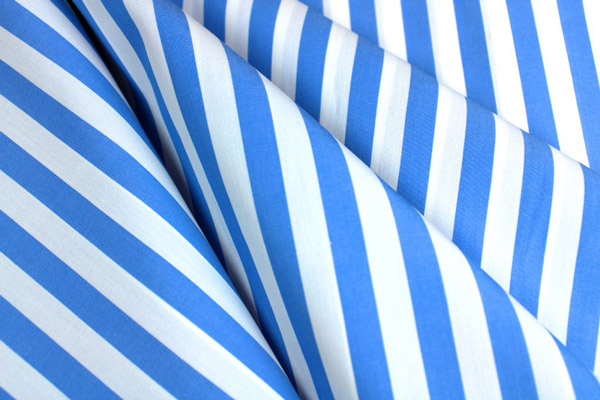
It is a yarn dyed product, available in two variants of stripes, one 5mm and the other 10mm, offered in a range of 09 basic colors, fashionable and stylish. The versatility of this cotton for shirts makes it also suitable for a wide range of other uses, in addition to shirts.
Linen, elegance and freshness
Linen is very popular among shirt fabrics, especially for summer shirts. It is lightweight, breathable and has a distinctive slightly rippled look that makes it perfect for a casual but refined look.
Shirts Thames M/Lino
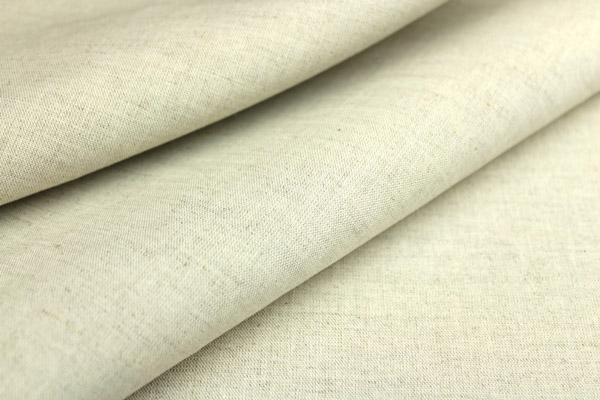
The Thames Shirt M/Lino is a fabric specifically designed for shirts for both men and women. This article is the result of the use of high-quality yarns, which give the fabric a feeling of exceptional softness, making it pleasant to the touch and extremely comfortable to wear.
Available in a selection of 11 colors, ranging from classic tones to the most fashionable and Positano style, this fabric stands out among other shirt fabrics for its elegance and versatility. Its adaptability makes it ideal not only to be inserted between the fabrics for men’s shirts, but also for a wide range of other uses.
Silk, luxury and refinement
Silk is the fabric for high-end shirts, especially among the fabrics for women shirts. It offers a unique shine and a luxurious feel on the skin, ideal for special occasions or for a sophisticated look in the office.
Cotton-polyester blend: practicality and durability
Mixed shirt fabrics, such as cotton-polyester, are a practical choice for those looking for easy-to-maintain shirts. These men’s and women’s shirt fabrics tend to wrinkle less and are more resistant over time, while maintaining a good part of the softness and comfort of cotton.
Coventry Stretch Shirts
The Shirt Coventry Stretch looks like an essential shirt fabric in the wardrobe, characterized by a yarn dyed design with Scottish and checked patterns. This fabric is versatile and suitable for all seasons, ensuring a look always fashionable and contemporary. Its texture and style make it an ideal choice among shirt fabrics for those who want to combine comfort and trend in every occasion.
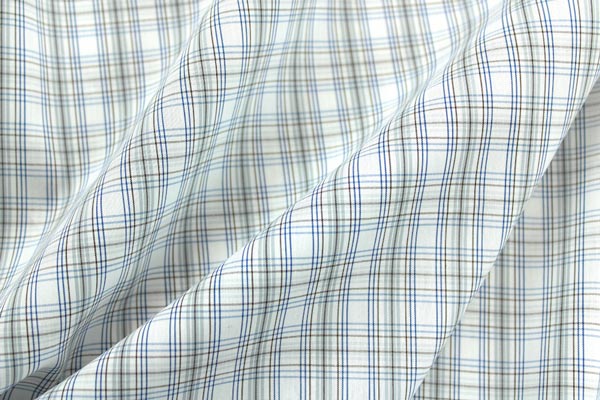
Fabrics for men’s and women’s shirts: differences and tips
In the choice of men’s shirts fabrics and fabrics for women shirts, it is important to consider the style and occasion of use. Men’s shirts often require more structured and formal men’s shirt fabrics, such as twill or pinpoint, while women’s shirts can explore softer, more fluid fabrics, such as silk or chiffon.
Men’s and women’s shirt fabrics have several distinctive features, both in terms of design and fit. Here are some of the main differences:
- Cut and Fit: Men’s shirts tend to have a wider and straight fit, with cuts that fit a variety of body types. Women’s shirts, on the other hand, are often designed with a more snug fit and shaped, to accentuate the female figure.
- Buttons: One of the most notable differences is the position of the buttons. In men’s shirts, buttons are generally placed on the right side, while in women’s shirts they are on the left side.
- Collars and Cuffs: The collars of men’s shirts are often more rigid and structured, designed to be worn with ties and bow ties. In women’s shirts, collars can vary greatly in style, often softer and decorative. The cuffs may also differ, with the female ones sometimes having more elaborate details or particular cuts.
- Design & Details: Women’s shirt fabrics can include a variety of decorative details such as ruffles, lace, transparent inserts or decorative buttons, which are less common in men’s shirt fabric. In addition, women’s shirts can have a wider range of necklines and cuts.
- Fabrics and Colors: Although both genres use a variety of shirt fabrics, women’s shirts often explore lighter and fluid fabrics than men’s shirt fabrics. The color palette and patterns in women’s shirts also tend to be wider and varied than men’s shirt fabrics.
- Length: Women’s shirts are often shorter than men’s shirts and can vary greatly in length, adapting to be worn both inside and out of pants or skirts.
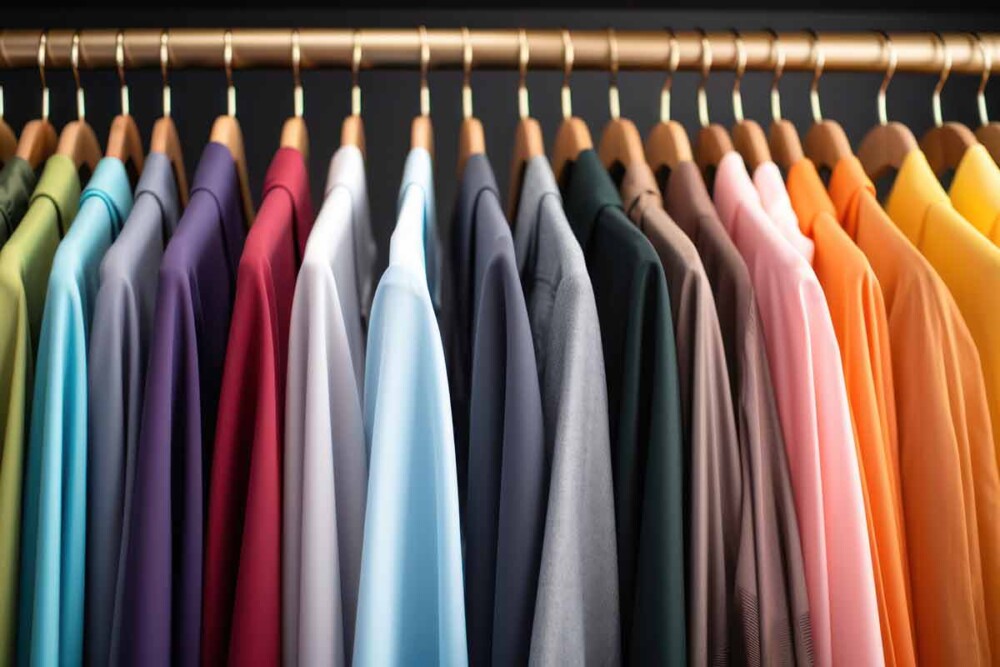
Why buy fabric shirts online
Buying fabric shirts online offers the advantage of a wider choice and the ability to easily compare prices and quality. Whether it’s men’s shirt fabric or women’s shirt fabrics, choosing the right fabric for a shirt can completely transform the look and comfort of the wearer.
Buy fabric for shirts online at Manifattura Foderami Cimmino allows you to explore a world of options, finding the perfect material for any occasion and style.
Boiled wool: uses and characteristics of this fabric
Boiled wool is a fabric that has crossed centuries of history, maintaining a fundamental role in the world of fashion and textile design. Known for its versatility and durability, boiled wool is a material that adapts to various uses, becoming an essential element for those seeking quality and comfort. Together with Manifattura Foderami Cimmino we discover the uses and characteristics of the boiled wool fabric!
Boiled wool fabric: where it comes from and how it is obtained
The boiled wool fabric is obtained through a felting process, where the wool is exposed to heat, moisture and movement. This process not only cleans the wool but also makes it more compact and durable. The result is a fabric that offers excellent thermal insulation, making it ideal for clothing intended to protect against the cold.
The process of producing boiled wool fabric is an art that combines craft skills and precise techniques. It starts with the selection of raw wool, chosen for its quality and finesse, ideal for cooking thanks to its elasticity and resistance. Once selected, the wool is washed to remove impurities such as grease, dirt and lanolin. This step is crucial to ensure the purity of the material. Next, the washed wool is carded, a process that serves to untangle and align the fibers, preparing them for spinning.
The next step is spinning, where the carded fibers are transformed into wire. This can be done manually or with the help of machines, depending on the scale of production. The obtained thread is then woven to create the base fabric, which can vary depending on the type of fabric desired.
The heart of the process is the “cooking” of the wool: the fabric is immersed in hot water and agitated. This process, known as felting, causes the flakes of the wool fibers to tangle and intertwine, creating a more dense and compact fabric. After cooking, the fabric is dried and can be ironed or pressed to achieve the desired finish. Sometimes, additional treatments are applied to improve the softness or give other properties to the finished fabric.
Finally, each piece of boiled wool fabric goes through strict quality control, ensuring that it meets the required standards. This process, which combines tradition and technology, produces a unique fabric, known for its durability, warmth and versatility.
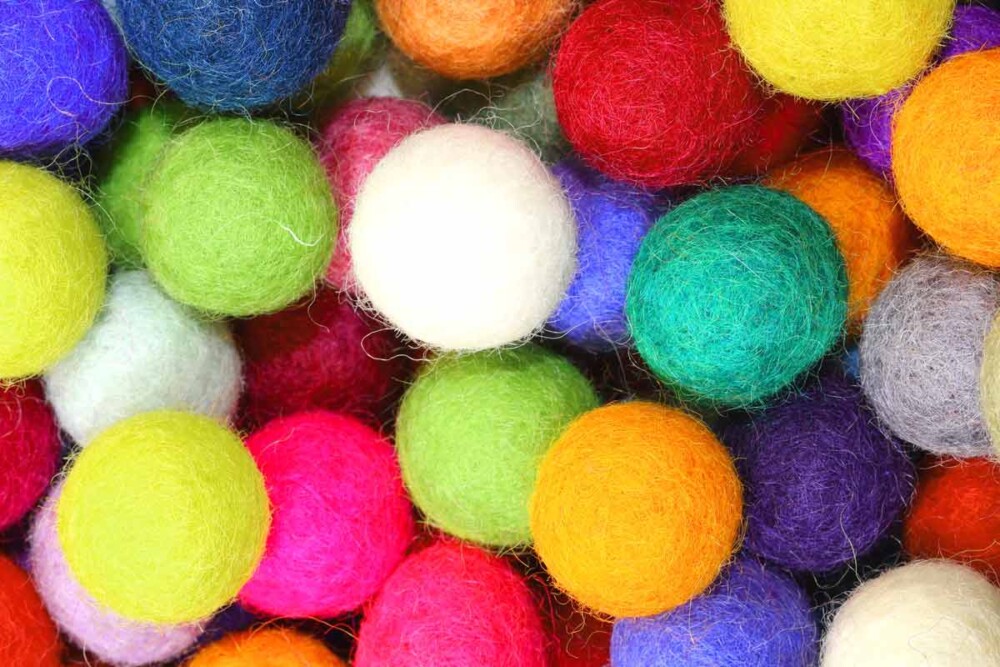
Wool cooked by the meter: what to use
Boiled wool is extremely versatile. It lends itself to the realization of garments such as coats, jackets, skirts and winter accessories. ts resistance makes it a popular choice for outdoor wear and for those looking for durable garments.
Boiled wool fabric by the meter is used for a variety of purposes, thanks to its unique characteristics of heat, durability and versatility. Here are some of the main uses:
- Winter Clothing: Boiled wool is very appreciated in the production of winter clothing such as coats, jackets, ponchos and coats. Its ability to provide thermal insulation makes it ideal for protecting against cold.
- Accessories: This fabric is also used to create winter accessories such as scarves, gloves, hats and boots, offering warmth and comfort during the colder months.
- Dresses and Skirts: Thanks to its dense structure and its ability to maintain shape, boiled wool is often chosen for the making of dresses and skirts, especially for autumn and winter fashion.
- Furnishing and Decoration: In addition to clothing, boiled wool is used in furnishing to create blankets, cushions, carpets and other decorative elements, adding a touch of warmth and comfort to the interior.
- Creative Crafts and Hobbies: Because of its ease of processing and the ability to not fray, boiled wool is also popular among fans of fabrics for sewing and crafts for the creation of cloth toys, decorations and craft projects.
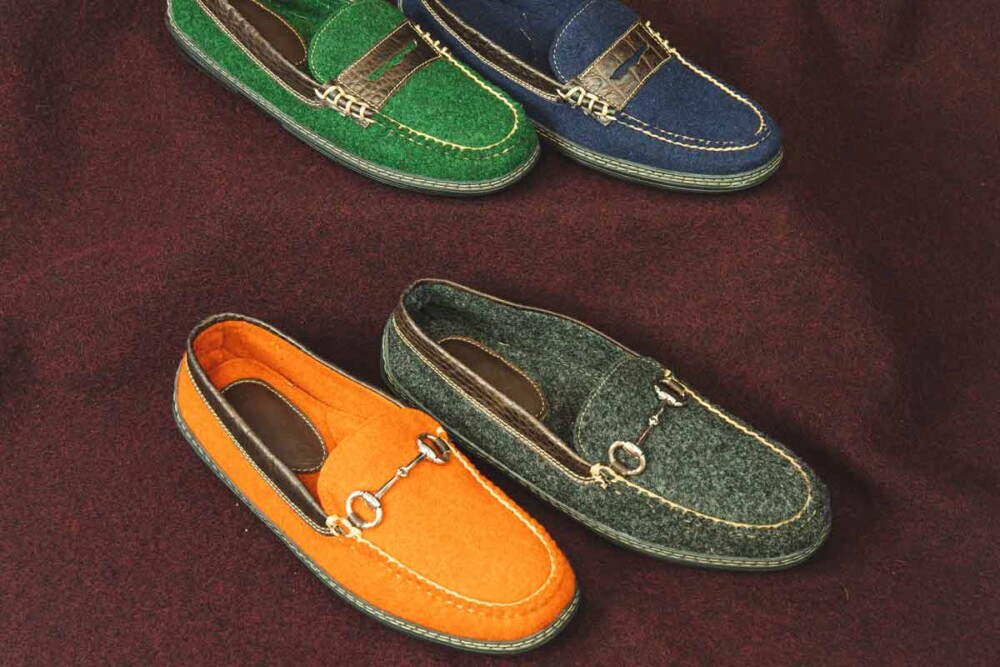
Buying boiled wool by the meter allows greater customization in the creation of clothing and accessories. This option is particularly appreciated by tailors and stylists who seek to offer their customers customized and high quality products. In addition, the ability to buy the exact amount needed reduces waste, contributing to a more sustainable fashion.
On the online catalog of Manifattura Foderami Cimmino you can find high quality boiled wool fabrics.
Lana Cotta Unito Fabric
The Lana Cotta Unito Fabric, a blend of wool and polyester, stands out for its warm and compact texture. This material is particularly sought after for the creation of winter clothing, offering warmth and comfort on colder days. It is also ideal for making accessories such as slippers and caps, combining practicality and style.
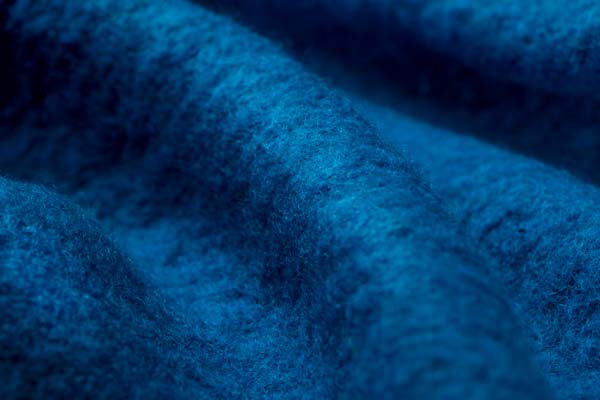
This fabric is also very appreciated in the world of handcraft, where its versatility and ease of processing make it a fundamental element for many creative projects.
Fabric Lana Cotta Polka Dots
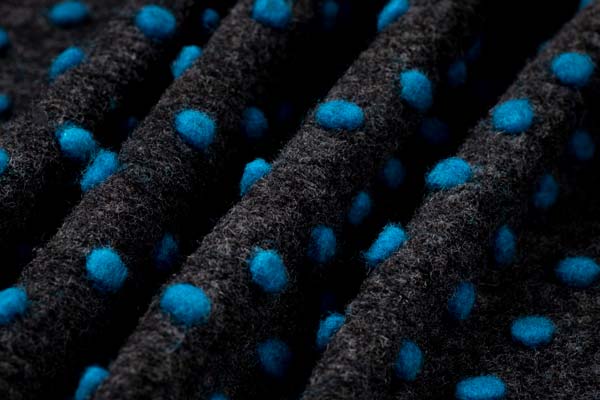
The Lana Cotta Pois Fabric, made with a mix of wool and polyester, looks like a warm and compact material, perfect for the colder seasons. Its distinctive feature is the embossed polka dots, which create a pleasant contrast with the base color of the fabric, adding a touch of originality and style. This fabric is widely used in the manufacture of winter clothing, offering not only warmth but also a unique aesthetic.
It is also ideal for creating accessories such as slippers and caps, combining functionality and design. In addition, in the handcraft sector, the Lana Cotta Pois fabric is extremely appreciated for its versatility and the ease with which it lends itself to a variety of creative projects, making it an indispensable element for lovers of manual work.
Boiled wool price: an investment in quality
The price of boiled wool can vary depending on factors such as wool quality, production process and provenance. Buying boiled wool fabric means choosing a product that will guarantee durability and performance over time, since it represents an excellent value for money.
Boiled wool is a fabric that combines beauty, functionality and sustainability. Whether it’s creating durable and warm clothing or making textile design projects, boiled wool offers a versatile and high-quality solution.
Buying boiled wool by the meter allows you to explore a world of creative possibilities, while ensuring a product that respects the environment and lasts over time: discover now the offer of high-quality boiled wool fabrics by Manifattura Foderami Cimmino.



